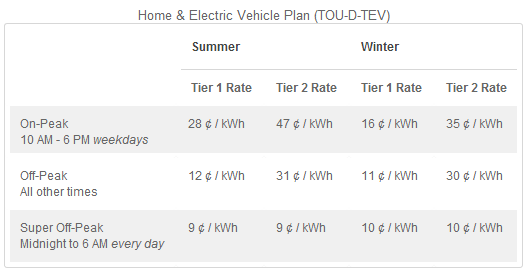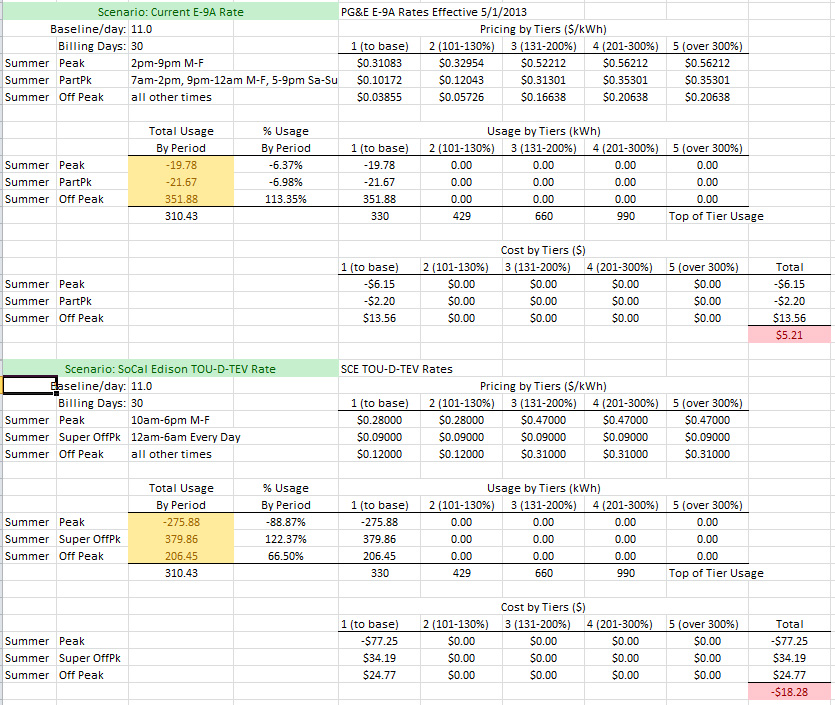cwerdna said:
I don't live in So Cal but https://www.sce.com/nrc/pev/index.html may help the OP, a little.
I think this page is more useful because it shows the actual rates.
https://www.sce.com/wps/portal/home/residential/electric-cars/residential-rates
Expand the "Home and Electric Vehicle Plan" or "Electric Vehicle Plan" to see those rates. SCE appears to promote dedicated metering with the Electric Vehicle Plan, but glosses over the thousands of dollars it costs to install an additional meter. I think that money is better spent on a solar PV system.
Changing to the Home and Electric Vehicle Plan from the regular Residential Plan will cost you more during the day for your normal household usage, but filling the car is relatively cheap. At 1,000 miles per month it will only cost you $39.21/month for your car's electricity. (1000 mi, 3mi/kWh, 85% charge efficiency, $0.10/kWh Super Off-Peak).





































